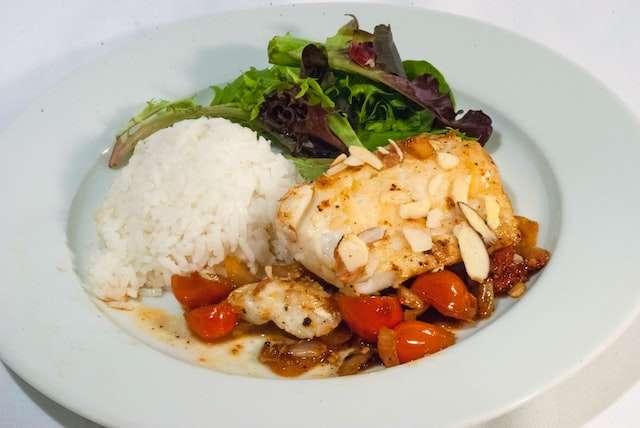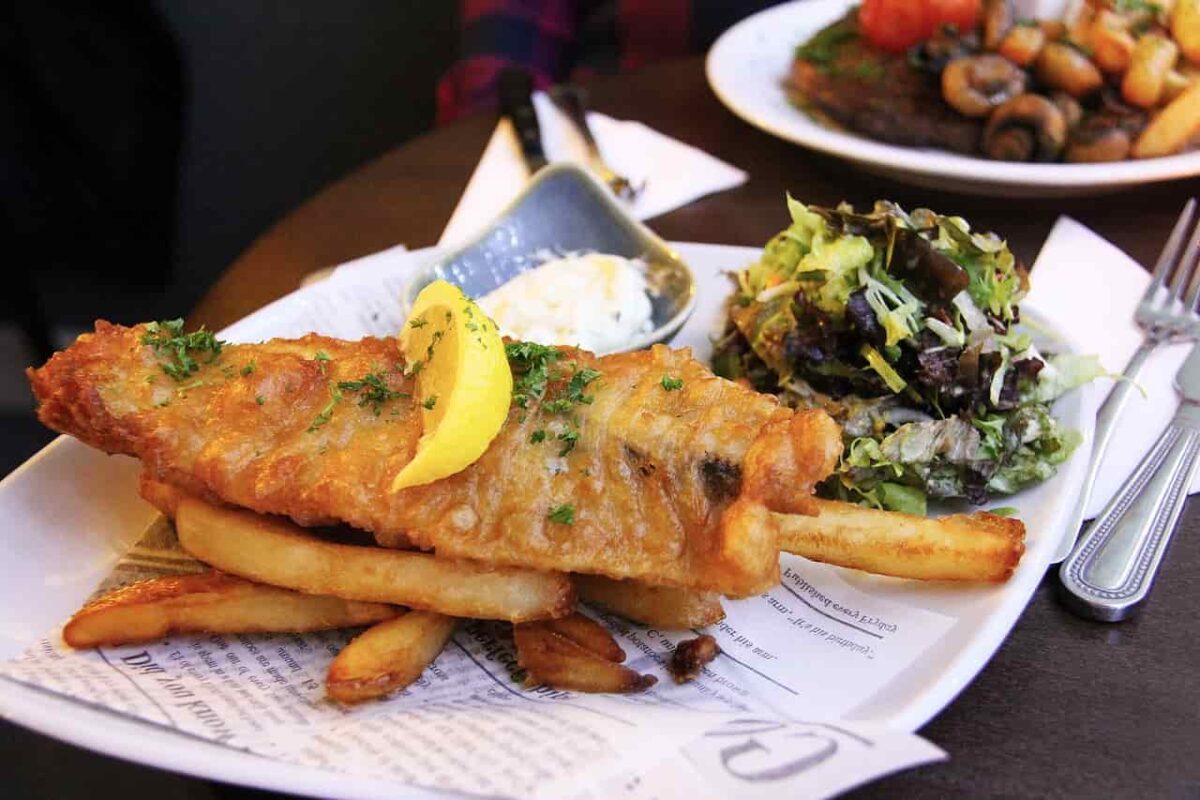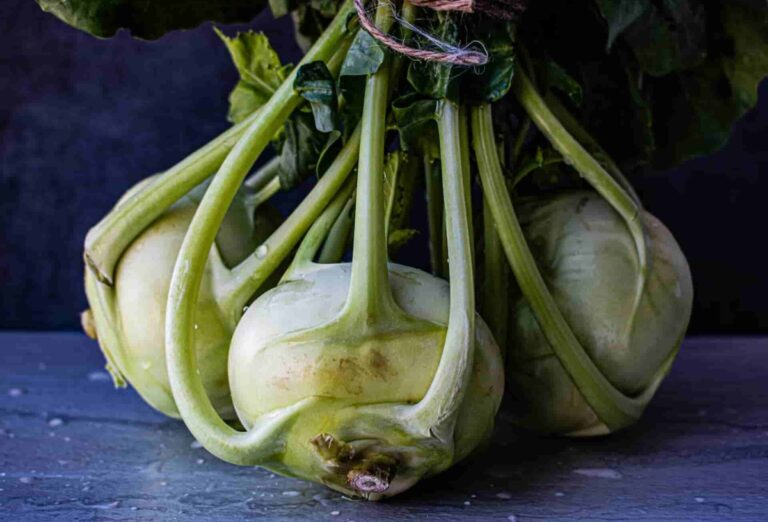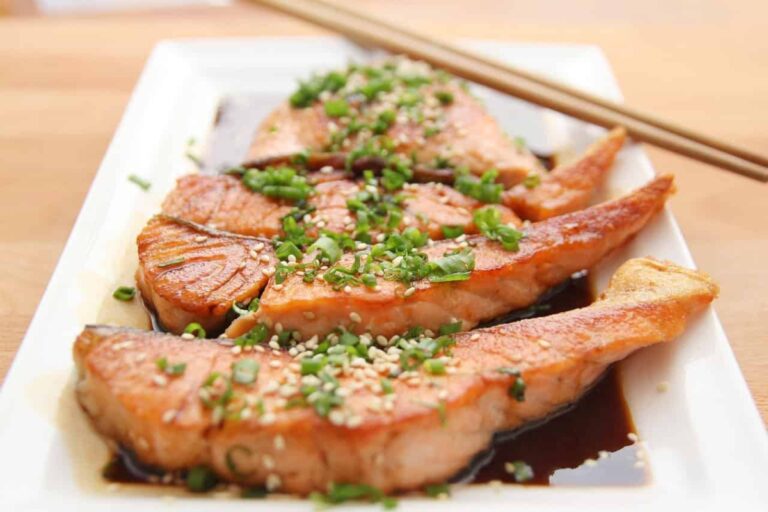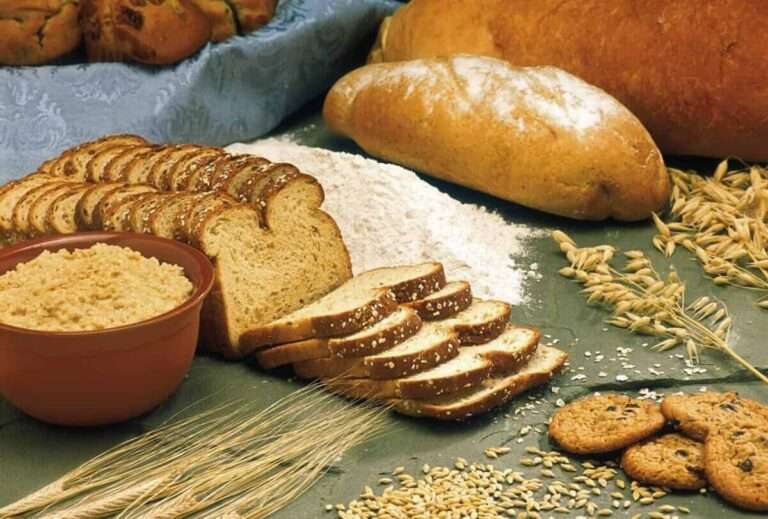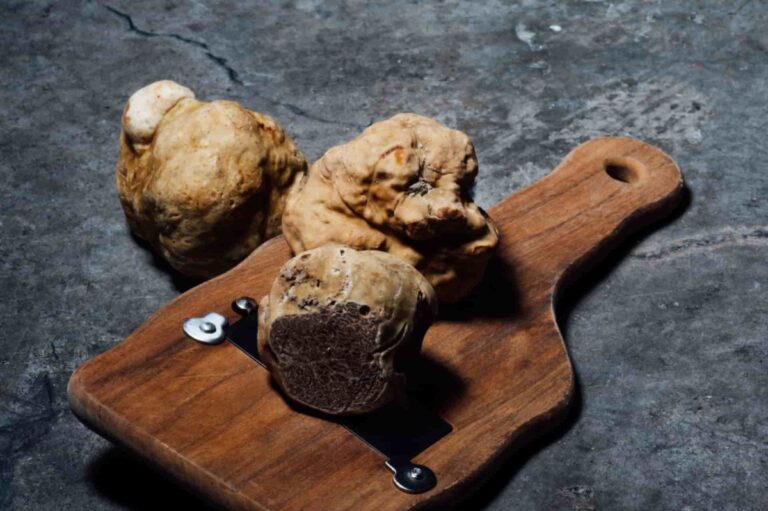33 top cod fish cooking manual
Did you know that the price of Atlantic cod is going up all over the world, making it more popular?
- The flavour of codfish, which can be found in both the Atlantic and the Pacific oceans, is one of the reasons why it is believed to be so popular among consumers. Because of its mild taste and solid texture, the meat of this animal is very desirable for consumption. The most common way to eat cod from the Atlantic is in the form of fish and chips.
- Cod is a fish that is synonymous with New England and at one time served as the cornerstone of the fishing business in the area. However, as a result of excessive fishing, the population of this species of fish has significantly decreased, and there are now plans in place to assist in the population’s recovery.
- In Spain, it is held in high regard by the Basques since it was used to nourish travellers while they were on their way to the New World. In reality, bacalao a la vizcaina (cod Vizcaya style) is a worldwide icon of Basque culture. A number of other well-known cuisines across the world use cod as an ingredient, including fish and chips in England, fish chowder in New England, ackee and saltfish in the West Indies, and dried cod heads in Iceland.
- The flakes made from Atlantic cod are bigger, sweeter, more firm, and “flakier.” Additionally, they contain less moisture and have a wider market. In contrast to the widespread consumption of Pacific cod and Alaska pollock in the United States, the widespread consumption of Atlantic cod, often referred to as “scrod,” is common in the United Kingdom.
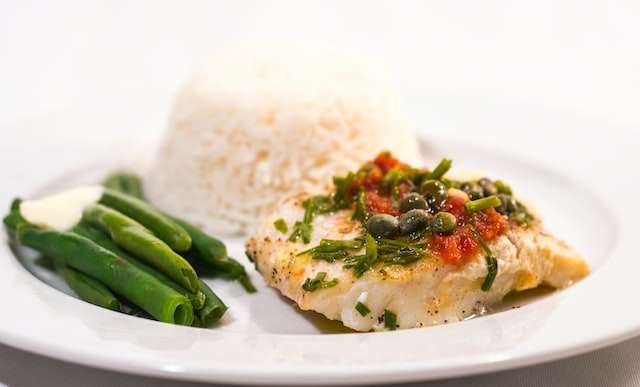
Cod nutrition values and health benefits
- The vitamin B12 found in cod is the micronutrient that really shines. Depending on the size, one fillet may contain all or more than the 2.4 micrograms of this vitamin that is considered the recommended daily amount for an adult. Vitamin C, vitamin D, iron, and salt are all present, but in lower concentrations than the other nutrients.
- Omega-3 fatty acids are a necessary lipid, and cod, like many other types of fish, is an excellent source of these acids. Omega-3 fats are essential to the body, yet the body cannot create them on its own. As a consequence of this, obtaining these fats via your diet is really necessary. Triglycerides are a harmful kind of cholesterol; including a sufficient amount of omega-3 fatty acids in your diet may help reduce their levels.
- The presence of mercury in fish is a source of worry for a lot of people since it has been connected to all sorts of neurological issues. People who are pregnant or breastfeeding in particular are often given the recommendation to reduce the amount of mercury in their meals. Cod, on the other hand, is regarded as a fish with either a low or moderate mercury content.
- Consuming fish such as cod on a consistent basis may assist your brain remain in healthy shape as you become older. One research found that if you consume baked or broiled salmon at least once a week, it may slow down the natural process of grey matter degeneration that happens in the brain as we get older. Consuming fish on a daily basis may also be associated with a decreased incidence of Alzheimer’s disease, however there has to be more research conducted on this topic.
- According to a number of studies, adhering to a pescatarian diet (one that does not contain any forms of meat) is related with a lower body mass index. Fish is a great alternative to red meat since it has less calories and less saturated fat, both of which may contribute to weight reduction.
- Iodine is an essential element for proper thyroid function, and cod is a good source of this mineral in considerable quantities. Iodine is necessary for the proper functioning of the thyroid, which is responsible for regulating the hormones that govern metabolism and cognitive ability. Problems like goitres, birth abnormalities, and symptoms of hypothyroidism may be avoided by getting an adequate amount of iodine in one’s diet.
- Cod is an excellent source of vitamin B12, which is essential for the body’s production of red blood cells and the synthesis of DNA. Vitamin B12 deficiency is possible for those who suffer from various diseases and ailments, including pernicious anaemia and gastrointestinal issues. If you are currently dealing with one of these ailments, your physician may advise you to eat extra foods that are rich in B12, such as fish.
- Cod is one of the top eight food allergens, and because fish in general, including cod, is one of those allergens, it is possible to be allergic to cod. On the other hand, in contrast to the majority of other food allergies, which manifest themselves in infancy, a fish allergy could not show up until maturity.
- Cod is healthy for most individuals, but those who are at a high risk of foodborne disease, such as the elderly or pregnant women, should probably avoid eating raw cod. If you are unsure about the kind of fish that are safe for you to consume, it is best to see your physician.
- During the preparation of frozen cod, the fish may be exposed to a salt solution, which might result in the addition of a substantial quantity of sodium. If you are on a diet that limits your intake of sodium, it is important to read the labels on frozen cod to ensure that you are staying informed.
100g of fresh cod has 82 calories(343kj), 18g protein, 0.7g fat, and 0g carbs including 0g fibre.

How to store cod and how to buy them
- If you have the opportunity to handle the fish, there are two crucial aspects of the experience that you should pay attention to.
- The texture of the fish should be slimy, as if it had been removed from the sea just moments before.
- When the flesh is pressed, there should not be a depression left in the fish, and it should rise back up to its normal height after being pressed.
- If after removing your hand you see a groove in the form of a thumb, the fish is not fit to eat.
- The outside of the fish need to have a metallic sheen, uniformity, and shine.
- Both the gills and the meat should have a deep, rich hue.
- The gills should have a bright red colour.
- Both the refrigerator and the freezer are suitable places to keep cod. Cod does not become rancid as quickly as other fish since it has relatively little fat. The smell of rotting fish is the most reliable indication of its state. The water around fresh fish may be pristine or it may smell salty. If the fish has a smell that is overpowering or strong, it indicates that it has been cooked for longer than it should have been. Keep the cod in the refrigerator in a container that can seal out air.
- Either wrap the product’s packaging in heavy-duty foil before placing it in the freezer or put it in a ziplock bag with some water and make sure that as much air as possible is removed from the bag before placing it in the freezer.
- Fish fillets that have been frozen should be defrosted at room temperature. Rinse the fish under running tap water and pat it dry with paper towels if there are ice crystals on top of the fish. If you want to defrost or thaw fish, do not use heat since it can cause the fish to start frying, which will damage its flavour. Due to the uneven distribution of heat throughout the cooking process, one side of the fish will be overdone while the other side would be raw.
- When stored properly, fresh cod has a shelf life of around three days in the refrigerator, although the pre-packaged kind may only be good for a maximum of two. Cod that has been frozen but still has its packaging on may be kept in the freezer for up to six months, whereas commercially frozen cod has a shelf life of between ten and twelve months. The frozen fish’s degree of freshness is also influenced by the circumstances in which it was transported. Fish will go bad if the right temperature is not maintained during storage.
- It is not hard to figure out whether or not fish has been recently caught. If you use your sense of smell, touch, and sight, you will be able to determine whether or not it has gone bad. Let us dive into the simple techniques to determine whether or not seafood is spoiled.
- You would expect that anything that smells like fish would smell like fish, given that it is fish, right? That is not, in point of fact, the situation. In most cases, the fish has already gone rotten if it smells fishy.
- Ammonia on the breath is another another indicator of spoiled seafood. There should not be much of a scent at all, if any at all, coming from it. You want there to be no scent at all, or you want there to be a new smell. It is OK for the food to smell like the ocean as long as it is made from seafood that comes from the sea, such as salmon, haddock, or cod.
- Fish that has lost its colour, has a greyish appearance, or seems transparent are all signs that the fish has gone bad. When purchasing a fillet, you want to make sure that it is moist and shiny. If you can not tell by looking at it, the best way to determine whether or not something is fresh is to smell it and touch it.
- Fish that has a slimy texture is an indication that it has gone bad. If it has also gone bad, the flesh on it may have a milky consistency, and you may notice this. It is common for fish to have a damp feeling when you first get them after purchasing them. On the other hand, you never want it to have a gummy or slimy texture.
- You do not want to take the chance of getting food poisoning from spoiled fish since it will not be a pleasant experience and you will be at danger of becoming sick. The long and the short of it is that you run the risk of being quite ill. It is possible that you may end up with some kind of food poisoning. Before you go ahead and consume the fish, it is strongly recommended that you check to make sure that it has not gone rotten.

Cooking techniques, secrets, and tips from the kitchen
- I am aware that preparing seafood, particularly fish of any kind, might make some individuals anxious while they are cooking in the kitchen. There are a few genuine reasons for it, such as “would I make myself sick if I undercook it?” or “high quality fish may be costly, therefore I do not want to chance destroying it,” but I want you to know that fish is fairly simple to prepare in the kitchen. I hope this helps.
- Always look for a high-quality, well-seasoned nonstick pan in my opinion. When it comes to delicate fish like flaky fish, I need to know that it will not cling to the pan at all. I have several pans in my kitchen that are perfectly fine for cooking some meals that are relatively sturdy, but when it comes to fragile fish like flaky fish, I need to know that it will not stick at all. If you do not have a cast iron pan, you may use any high-quality nonstick pan instead. However, a cast iron pan is the superior option.
- When I want to brown things like cod, I set the flame on my gas burner to a level that is between between medium-high and high. If you purchase cod, the skin will most likely have been taken from the fish, but you will still be able to distinguish between the fish’s underside and its topside. My preferred method is to sear the top side first, and then complete the cooking in an oven that has been preheated to around 425 degrees Fahrenheit. Cod has to be cooked quickly, which means that dinner may be on the table soon, which is beneficial on hectic weeknights when time is of the essence. This is another fantastic reason to learn how to prepare cod.
- Keep things simple; high-quality fish tastes wonderful when seasoned with little more than salt, coarse black pepper, and a splash of lemon juice after it has been cooked. In addition, the use of fresh herbs is usually a wonderful way to perk things up. Fish does not require any heavy sauces, but if you want a sauce, keep it light and fresh like citrus butter or fresh basil sauce.
- Purchase each piece of fish to weighs between 6 and 8 ounces, then sear it in the pan for around 3 to 4 minutes on each side. After that, the skillet is placed inside of the preheated oven for a further 12–14 minutes of cooking time. When the cod is done, you will know it when you push down on it with your finger just a little bit. If it still feels mushy after a few minutes, then it probably needs a few more minutes of cooking, but if it is firm, then it is ready to eat. When the fish is pushed down with a fork in a gentle manner, it will likewise split into beautiful white flakes.
- The nicest part about cod is that it can be seasoned and flavoured in any way that you choose since it is very flavourless on its own. In this meal, we combine it with tomatoes and fresh thyme, but you could also try it with crushed olives and oregano. Both of those combinations would be delicious. You may substitute the tomatoes with other veggies that roast quickly, such as zucchini or pearl onions, or you can change up the flavours by using another citrus fruit for the sliced lemon.
- It was prepared easily and served with roasted potatoes and a salad on the side. Or, you could make some fantastic fish tacos with tortilla wraps and a cabbage slaw by combining the two, this is a particularly great use for any leftover fish. If you like drinking wine, we suggest pairing this buttery fish with a fine, dry white wine. If you do not drink wine, you may skip this recommendation.

History of cod from the beginning until today
- Since the Viking era, cod has been a valuable item on global markets (around 800 AD). As the Norwegians continued their journeys, the demand for dried cod in southern Europe grew. More than a millennium after its founding, this market is still a vital part of the Norwegian fish trade. It has survived the Black Death, wars, and other catastrophes.
- Around the 15th century, the Portuguese started fishing for cod. Portuguese cuisine often features clip fish. Basques are said to have discovered the Canadian fishing banks before Columbus landed in the New World, thus they clearly played a significant part in the cod trade.
- When William Pitt the Elder spoke out against the Treaty of Paris in Parliament, he called cod “British gold” and argued that giving the French back access to fish in Newfoundland was a mistake.
- With the Molasses Act of 1733, Britain attempted to curb commerce between New England and the British Caribbean in the hopes of stifling what they saw as a lucrative industry. In its place, the cod trade flourished since the “French were willing to partner with the New Englanders in a profitable illicit arrangement.”
- It was not until the 20th century that Iceland once again became a fishing superpower, and it was then that it participated in the Cod Wars.
- Stocks off the shores of Europe and the United States were severely reduced in the late 20th and early 21st centuries, making fishing a contentious political issue. Having to reduce catches to help depleted fisheries recover has angered the fishing industry and politicians who do not want to destroy jobs.
